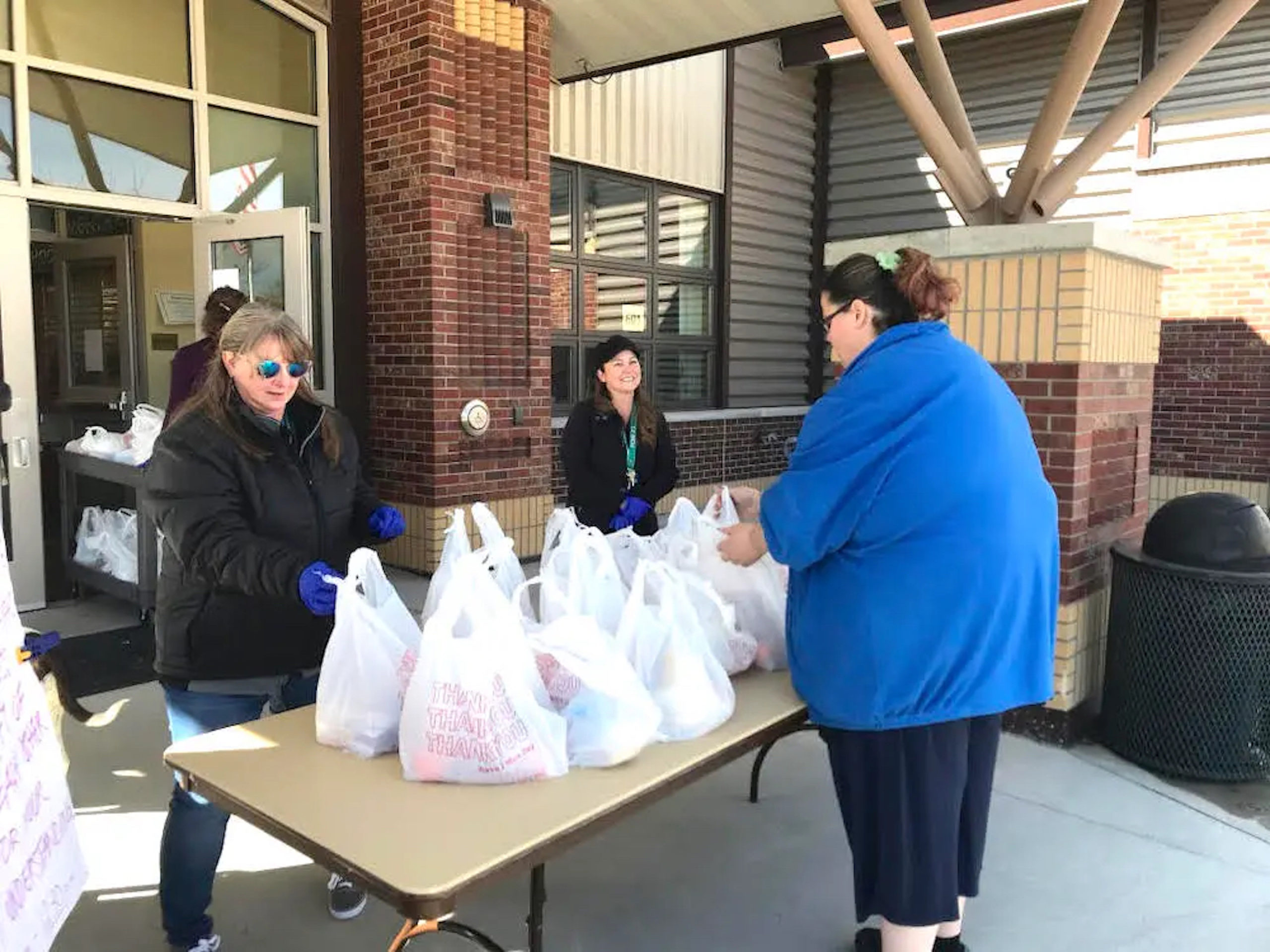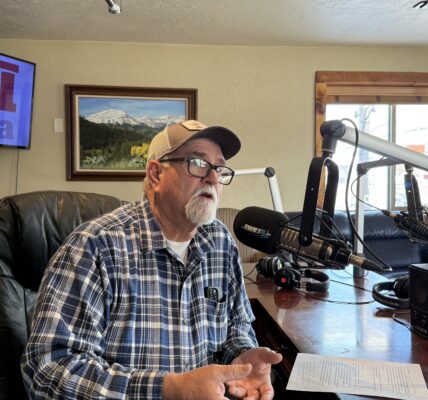
• State education boss says Wyoming’s current summer lunch program suffices. Food-assistance organizations don’t see it that way.
By Katie Klingsporn, WyoFile.com
Wyoming is one of 15 states to opt out of a new U.S. Department of Agriculture program that aims to supplement family food needs when school isn’t in session. Though Wyoming’s education chief said the program is extraneous, food-assistance leaders say existing programs could use more help to serve the state’s struggling families.

Superintendent of Public Instruction Megan Degenfelder said the new Biden administrative initiative, known as Summer Electronic Benefit Transfer, is a welfare program mis-marketed as a program for kids.
“I will not let the Biden Administration weaponize summer school lunch programs to justify a new welfare program,” Degenfelder said in a statement emailed to WyoFile. “Thanks, but no thanks. We will continue to combat childhood hunger the Wyoming way.”
Not everyone sees it that way, however. The state relies on a patchwork of programs that complement one another to fight hunger, several Wyoming food-assistance representatives told WyoFile, and this USDA benefit would be one more way to increase access to quality food.
Picking up a free meal “is not the same as having nutritious food in the home throughout the season when school is not open,” Feeding Laramie Valley founder Gayle Woodsum said.
Food assistance in Wyoming requires a lot of collaboration and cooperation, she added. “We are all in this together, let’s pool our resources … We’d be happy to help the state figure out like, ‘what does the state need to do more of this?’”
Becky Packer works for the Backpack Program in Lander, which is administered through the Fremont County School System and orders food from the Food Bank of Wyoming. Volunteers pack food for a family of four into backpacks and drop them at schools. Those bags are then sent home to provide kids and their families sustenance for the weekend — when free school meals aren’t available.
Packer thinks the new USDA program would be a helpful supplement to her initiative and others.
“I think it would be great if [Wyoming] could use that program,” she said.
Grocery help
The new USDA-funded summer program will work like this: States provide families with $120 per eligible child in the form of a benefits card to buy food at grocery stores, farmers markets or other authorized retailers.
The idea is to bolster access during summer, when schools that provide free and reduced-price meals to students who qualify aren’t in session.
USDA estimates the inaugural program will serve close to 21 million children this summer, providing a total of nearly $2.5 billion in grocery benefits. Some 35 states, five territories and four Native American tribes have signed on. Wyoming’s Northern Arapaho and Eastern Shoshone tribes are also not among first-year participants.
The permanent program was approved as part of a bipartisan budget agreement in 2022.
Summer electronic benefit transfers, commonly known as EBT, reduce child hunger and improve diet quality, according to evaluations of a multi-year demonstration project cited by the agency. Project benefits decreased the number of kids with very low food security by about one-third and supported healthier diets, USDA said.
In some communities, families who need food over the summer can pick up meals at a central location. But those meal sites historically only reach 1 in 6 children who are eligible for free or reduced-price school meals during the school year, according to USDA.
There is value in empowering families by allowing them the kind of food choices the electronic benefits furnish, Woodsum of Feeding Laramie Valley said.
“Having the choice, having the power to actually make decisions about the nutrition level in your home as opposed to ‘this is all I can afford to buy,’ addresses all kinds of things,” she said. “It’s addressing health issues, poverty issues. It’s not as simple as just food.”
Fighting food insecurity is complicated, she said, and one-size-fits-all programs can’t meet all the varied needs. Some families don’t have the means to shuttle their children to scheduled summer meals, for example.
But Degenfelder, who Gov. Mark Gordon’s office directed WyoFile to for comment on the decision, said she is committed to improving Wyoming’s existing program.
“Wyoming already has a school-based nutrition program available during the summer that directly serves kids and I am committed to making this program easier for students to access, no matter where they live,” Degenfelder said.
Along with participating in the National School Lunch Program, a federally assisted program that provides low-cost or no-cost lunches to children living in eligible areas each school day, Wyoming also participates in the federally assisted Summer Food Service program.
The summer program feeds kids by opening meal sites — hosted by sponsors like schools or camps — where children can get a meal. Meal sites are located in areas where the local school or census block has greater than 50% eligibility for free and reduced lunches.
Summer meals are furnished to kids 18 or younger, with no eligibility requirements or questions. There were 96 Wyoming sites last summer in 31 communities across 16 of the state’s 23 counties, according to the Wyoming Department of Education.
Wyoming’s First Lady Jennie Gordon has put a major emphasis on fighting food insecurity with her Wyoming Hunger Initiative. Gordon is utilizing her platform to increase awareness and support the work of local organizations across Wyoming to benefit children, according to her spokesperson Trista Ostrom.
“Wyoming Hunger Initiative does not accept state or federal funding and defers to state and federal agencies for the development and implementation of those government programs,” a statement from Gordon’s office said.
Meeting food needs
At 11.4%, Wyoming’s average prevalence of household food insecurity between 2020-2022 is slightly higher than the U.S. average of 11.2%, according to the Department of Agriculture.
That said, the Food Bank of Wyoming “feels that that number is much higher right now,” Executive Director Rachel Bailey said. The organization’s partners are asking for more food, she said. “We also have increased the amount of food that we’re distributing in communities by about 10%” from a year ago.
Stacy Stebner directs the Lander Care and Share Food Bank, where she said demand has “skyrocketed.” Before COVID, “our food bank was serving around 1,000 people per month,” she said. “And since COVID, it’s anywhere from 1,500 to 1,800 people.”
“Right now, there are a lot of Wyoming individuals and families that are struggling,” Bailey said, due in part to the end of COVID-era benefits along with inflated prices. There are more families with children seeking out assistance for the first time, she said. Bailey didn’t comment on the EBT program specifically, but also said a range of options is ideal.
“Yes, there are a lot of really amazing programs that are here in the state,” Bailey said. “But I think that families need to be able to have the ability to apply for programs so that they can go get healthy and nutritious groceries at the grocery store, as well as being able to reach out to their local food pantry, or food for kids program.”
Stebner echoed that.
“There’s already so much pressure on the nonprofit sector to fill the gap between what people need to survive and what they can afford,” Stebner said.
USDA is providing assistance, training and tools to participants, according to the federal agency. States and tribes that do not launch the program this summer will have future opportunities to opt in, according to the USDA.
WyoFile is an independent nonprofit news organization focused on Wyoming people, places and policy.





